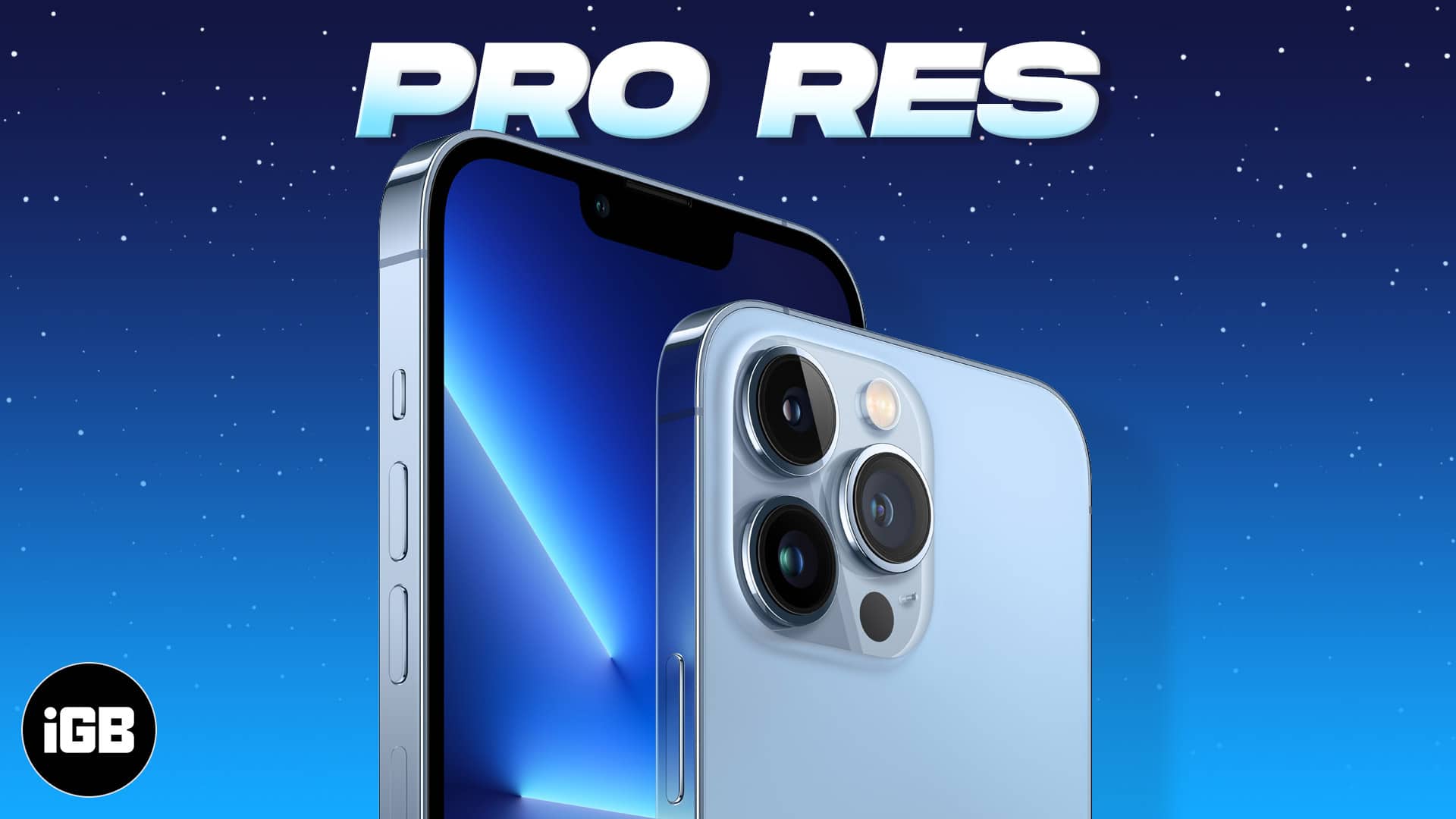Each year with the introduction of the new iPhone lineup, Apple brings a new era of photography along with show-stealing features. Undoubtedly, they make headlines for the entire year. And this year again, Apple has introduced a new feature called Apple ProRes to up your video game!

Let’s dive in and explore everything about Apple ProRes.
- What is ProRes on iPhone 13 Pro models?
- How much storage does the ProRes format require?
- Difference between ProRes and H.264/H.265 video codecs
- Why is ProRes a big deal?
What is ProRes on iPhone 13 Pro models?

Like H.264 and H.265, ProRes is a high-quality video format codec technology incorporated in iPhone 13 Pro models. The feature was introduced in 2007 with Final Cut Studio 2 and has made its way to many professional devices.
ProRes codec uses multicore processing to support frames up to 8K at full resolution. The high color fidelity and low compression of ProRes not only let users record video but also compress the file while retaining the original quality.
The codec uses compression algorithms based on the discrete cosine transform (DCT). There are many different forms of ProRes, and each form supports different data rates and resolutions at 10-bit color depth. It helps bridge the gap between large, uncompressed video and modern codecs that preserve bandwidth.
However, this heavy-duty video feature comes at a cost! But before we dive into it, let’s understand a few nitty-gritty.
Different ProRes formats on iPhone 13 Pro models
As mentioned above, Apple ProRes supports only:
- iPhone 13 Pro
- iPhone 13 Pro Max
However, the ProRes video format comes in two different forms on the iPhone 13 Pro and iPhone 13 Pro Max – 1080p and 4K. Keeping in mind the storage requisites, Apple has limited some functionality of ProRes on both models.
ProRes on 128GB models of iPhone 13 Pro and iPhone 13 Pro Max is limited to 1080p. 4K ProRes is available on a 256 GB iPhone 13 Pro or iPhone 13 Pro Max model and higher.
Moreover, ProRes is currently unavailable. Apple says it will release the feature on supported devices in a future update.
How much storage does the ProRes format require?
For the record, just 1 minute of 4K ProRes video shooting on iPhone 13 Pro and iPhone 13 Pro Max occupies 6GB of iPhone storage. To sum up, 10 minutes of 4k ProRes video will occupy 100GB of storage on iPhone 13 Pro and iPhone 13 Pro Max.
Hence, it’s crystal clear why Apple introduced a 1TB variant this year. Smart move, Apple!
So, if you plan to use 4K ProRes quite a lot, I recommend buying iPhone 13 Pro or iPhone 13 Pro Max with a storage capacity of 256GB or above, as 128GB will only support the 1080p video format.
Difference between ProRes and H.264/H.265 video codecs
ProRes offers high color fidelity and a low compression ratio. Moreover, it works with all QuickTime Movie Format (MOV), such as 8K, 4K, 2K, and so on, at 10-bit codec. Whereas, H.264/H.265 (HEVC) codec offers a high compression ratio and works with such major formats as MP4, M4V, and so on, at an 8-bit codec.
Moreover, H.264/H.265 (HEVC) uses the Group of Pictures (GOP) approach to compress a group of pictures to form a complex architecture. Hence, even with less file size, H.264/H.265 requires intensive CPU & GPU power.
One downside of ProRes video files is their large size in comparison to the latter one.
Why is ProRes a big deal?
It is no surprise that iPhone’s camera has a fan following of its own. There are many movies completely shot on it before too. Apple takes it a notch up with the introduction of ProRes in its iPhone 13 Pro models. This time, challenging the professional cameras!
ProRes makes the professional video quality handier. And this is especially a game-changer for professional photographers, filmmakers, and video shooters. However, it isn’t fit for all. As even a single video would consume the real estate of up to 6GB.
That’s everything you need to know about ProRes in iPhone 13. What do you think of it? Share your thoughts in the comments below!
Read more:
